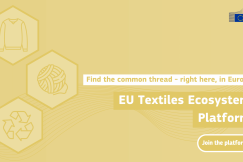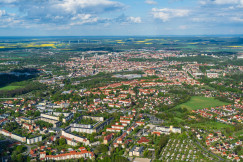Articles
29 May 2025
The State of Fashion 2025: Challenges at every turn
Articles
29 May 2025
R&I, techniques and technological solutions
Skills
Sustainable competitiveness
+4 more
Login / create an account to be able to react
-
48

The State of Fashion 2025 report by McKinsey & Company and BoF explores how the global fashion industry is facing a complex landscape shaped by economic uncertainty, changing consumer preferences, and rising geopolitical tensions. It highlights a shift toward value-driven shopping, the growing influence of older consumers, and the increasing popularity of affordable alternatives to luxury. The report also underscores the need for brands to adapt quickly—focusing on resilience, innovation, and operational efficiency—to stay competitive in an environment where growth is uneven, and consumer trust is harder to earn.
McKinsey & Company
Topics
Albania
Armenia
Austria
Belgium
Bosnia and Herzegovina
Bulgaria
Croatia
Cyprus
Czechia
Denmark
Estonia
EU-27
Finland
France
Georgia
Germany
Greece
Hungary
Iceland
Ireland
Italy
Kosovo
Latvia
Liechtenstein
Lithuania
Luxembourg
Malta
Moldova
Montenegro
Netherlands
North Macedonia
Norway
Poland
Portugal
Romania
Serbia
Slovakia
Slovenia
Spain
Sweden
Switzerland
Türkiye
Ukraine
Business Support Organisation
Company with 250 or more employees
Financial Institutions and Investors
Industry Associations and Chambers of Commerce
Networks and Federations / Confederations
SMEs (a company with less than 250 employees)
-
Transition Pathway's building blocks
-
-
R&I, techniques and technological solutions
-
Skills
-
Sustainable competitiveness
-
-
Industrial ecosystems
-
-
Textile
-
-
Textiles ecosystem areas
-
-
Fibres, yarns and fabrics
-
Apparel and clothing accessories
-
Research and Innovation
-
Share
According to the 2025 report by McKinsey & Company and BoF “The State of Fashion 2025”, in 2025 the fashion industry finds itself operating a complex and volatile landscape. After years of disruption—from the pandemic to economic uncertainty—brands are being forced to rethink how they operate. Profit margins are tight, and with inflation and cautious spending, companies are being pushed to do more with less resources, leading to an overall less positive outlook on the year ahead.
At the same time, consumers are changing. Today’s shopper is increasingly price sensitive and has shown to be less willing than hoped to pay extra for planet-friendly products. Consumers searching for value are however driving the resale market, and the drive for affordability is propelling growth for off-price retailers and outlets. Many consumers are shopping digitally, comparing prices, leading to the in-store experience as a crucial differentiator. To drive growth, companies are recommended to rely on older generations (“Silver Spenders”), as younger consumers are more financially squeezed than other cohorts.
While governments are introducing stricter regulations on sustainability, factors like complexity, fragmentation and consumer sentiment are barriers to sustainability targets. As a result, brands, suppliers and innovators are struggling to make progress, finding difficulties in raising funds or quitting production altogether. However, sustainability can also be an opportunity for the fashion industry by shifting the focus on cost-effective decarbonisation, rethinking long-term supplier contracts and analyse data in a more granular way.
On a global scale, supply chains are being restructured. Geopolitical shifts and rising costs are pushing companies to diversify where they source and manufacture. Emerging markets in the Global South are starting to play a bigger role, both as production hubs and as growing consumer bases.
Finally, attracting and retaining talent is becoming just as important as designing the next big collection. Internally, brands are realizing they need to cultivate new skills—especially in tech, data, and customer care, supported by employee incentives and rewards.
In short, 2025 will be a year of transition. The fashion industry is being reshaped by economics, technology, sustainability, and a more demanding consumer. The brands that succeed will be the ones that stay agile, act with purpose, and keep pace with a rapidly changing world.
Comments (0)
See also
-
4
Welcome to the Digital Business Community Workspace!
- Categories
- Investments and funding R&I, techniques and technological solutions Skills +26 more
-
45
Introducing the ‘Themed Discussion Days’ on the EU Textiles Ecosystem Platform
- Categories
- Infrastructure Investments and funding R&I, techniques and technological solutions +26 more
-
33
Welcome to the ‘Community resilience and local economies’ workspace
- Categories
- Infrastructure Investments and funding R&I, techniques and technological solutions +26 more




